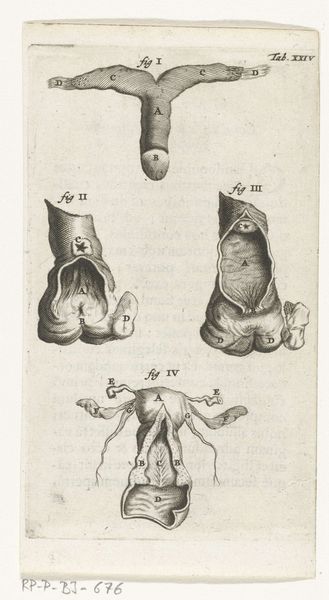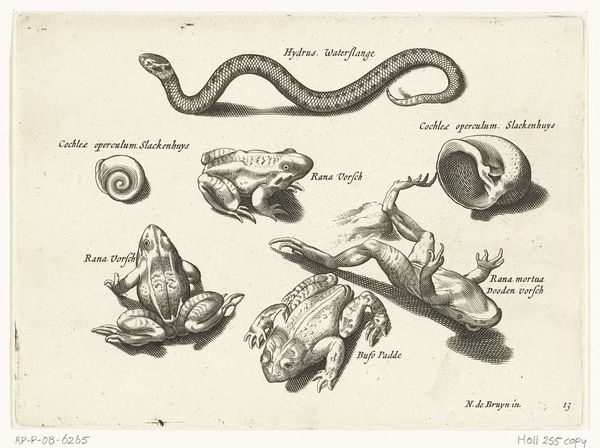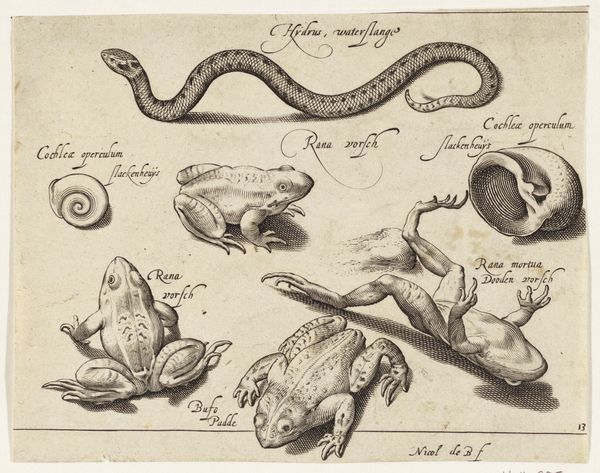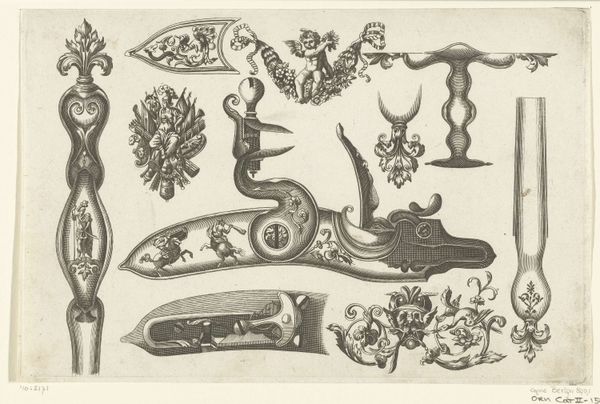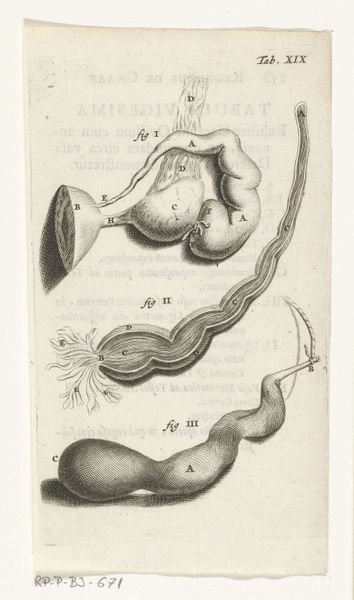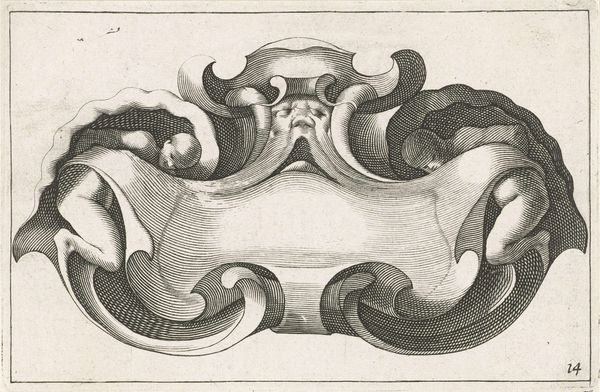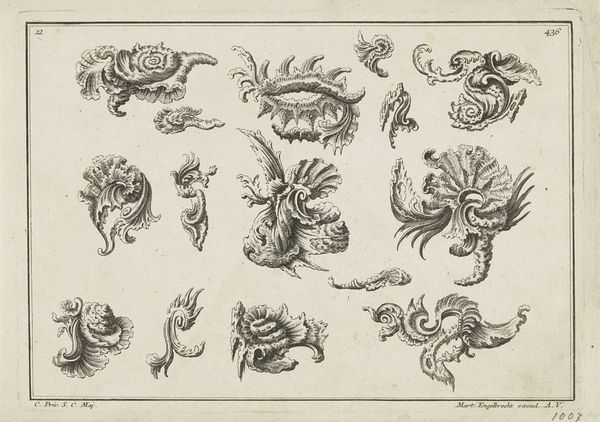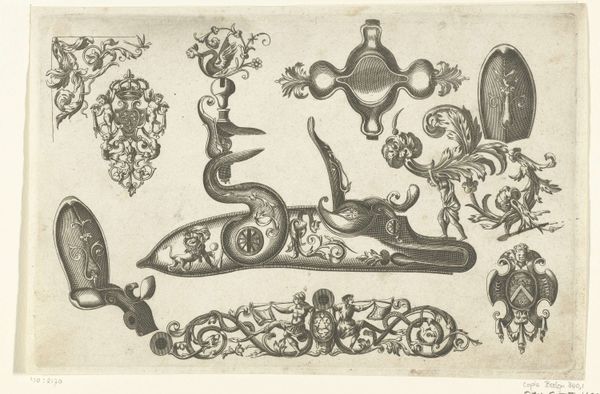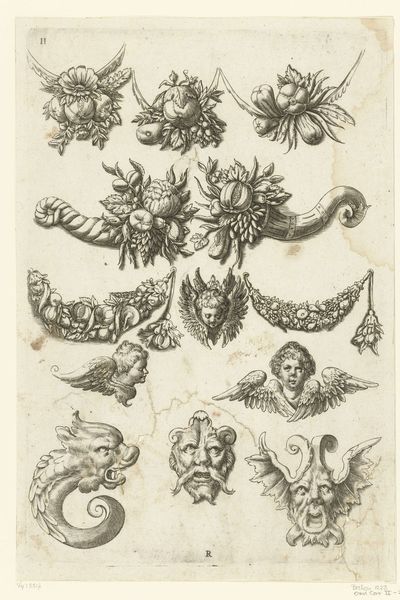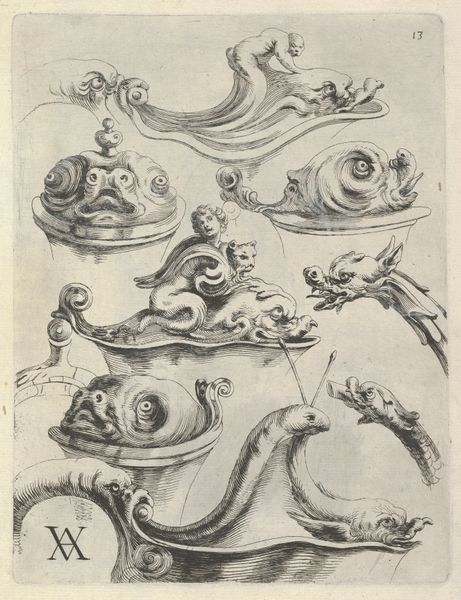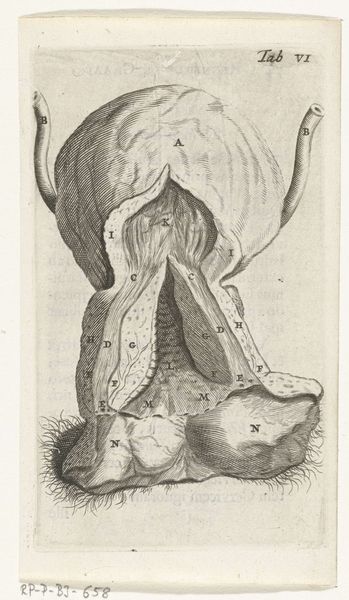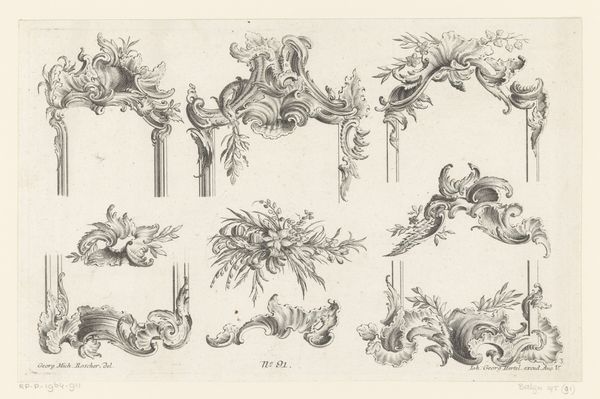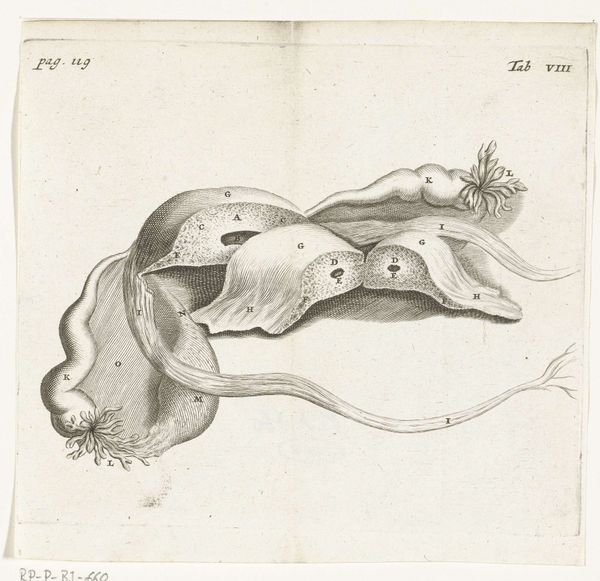
Anatomische afbeelding van groeistadia van het embryo in de baarmoeder 1672
0:00
0:00
drawing, print, paper, ink, engraving
#
drawing
#
baroque
# print
#
old engraving style
#
figuration
#
paper
#
ink
#
pen-ink sketch
#
history-painting
#
academic-art
#
engraving
Dimensions: height 140 mm, width 80 mm
Copyright: Rijks Museum: Open Domain
Curator: This drawing, "Anatomische afbeelding van groeistadia van het embryo in de baarmoeder," or "Anatomical Representation of the Growth Stages of the Embryo in the Womb," created around 1672 by Hendrik Bary, captures a vision of early life in the Baroque era. What strikes you first about this engraving? Editor: A bit eerie, isn't it? The detailed rendering and the almost clinical presentation of something so inherently… miraculous. The rendering in ink on paper adds to its otherworldly atmosphere. Curator: It does possess a certain detached curiosity. Bary was, after all, working within a tradition that was just beginning to explore the inner workings of the human body with newfound scientific zeal. I see such ambition in the lines, how he articulates form with just line work. Editor: Absolutely, and it’s precisely that intersection of science and craft that fascinates me. The labour involved in meticulously engraving these plates, reproducing and disseminating knowledge. This image speaks volumes about the material conditions of scientific inquiry at the time. Each print is a testimony to human knowledge and skill. It shows the transition from early pen and ink illustrations, towards reproducible printing methods. Curator: There's also something deeply imaginative happening here. Consider the stylized womb. It is, after all, an artistic interpretation rather than a direct observation in our modern sense. These "growth stages," how he conceptualizes them, strikes me as profoundly beautiful in its reaching beyond strict science. Editor: True, and those swirling, baroque embellishments around the central image. But don't mistake "stylized" for naive. Bary wasn't just arbitrarily decorating; he was participating in an economy of images. The accuracy and appeal influenced the distribution. Curator: It’s quite breathtaking to consider that these were visualizations informing the understanding of life itself. Each carefully etched line offered new possibilities and ways of comprehending creation, still imbued with mystery even with a scientific approach. Editor: It does offer a chance to see how knowledge was literally built up, layer by layer, using the tools and resources at hand. Every impression a tiny revolution in how we perceive our own making. Curator: Ultimately, it's about the fascinating dance between empirical observation, artistic interpretation, and the birth of a new science of ourselves, isn’t it? Editor: Precisely. And how the value of a print goes far beyond aesthetics and reveals material realities that defined scientific understanding for centuries.
Comments
No comments
Be the first to comment and join the conversation on the ultimate creative platform.
